Definition
Pneumothorax is a mechanical disorder of the lung and pleural space characterized by the abnormal accumulation of air in the pleural space, with iatrogenic disease and trauma being the leading cause, but uncommonly is associated with spontaneous rupture of a bulla in young thin patients.
- Other unusual causes
- Sarcoidosis
- Pulmonary Langerhans Histiocytosis (10-25%)
- LAM – PTX 40%
The resulting air creates a mechanical disadvantage to lung movement in that the movement of the lung and thus air movement is limited. When large it can compromise lung function.
It may be complicated by tension pneumothorax as air that gets in to the pleural space continues to accumulate without egress and the increasing resulting pressure compresses low pressure cardiovascular structures causing cardiorespiratory difficulty that could end in death if untreated.
The diagnosis is suspected clinically and confirmed by CXR.
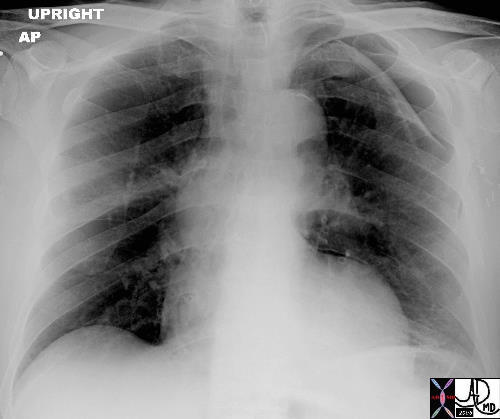
Pneumothorax
This case shows a chest x-ray of a patient who had a lung biopsy which was complicated by a pneumothorax and a small amount of pleuroparenchymal hemorrhage. The two components of the pleural layer have been separated and the cohesive/adhesive forces have been disrupted by the air which now intervenes and disturbs the physics of the capillary action. The parietal pleura remains attached to the chest wall while the visceral pleura remains attached to the lung. This is a small pneumothorax and had no effect on the patient or the mechanics of lung movement. In this case we followed the patient with a CXR at 2 and 4 hours later. When no progression was demonstrated we allowed the patient to be discharged home with special instructions to limit activities till the next day. In this case there is an abnormal increase in the density of the visceral pleura
Ashley Davidoff MD TheCommonVein.net 42041b01
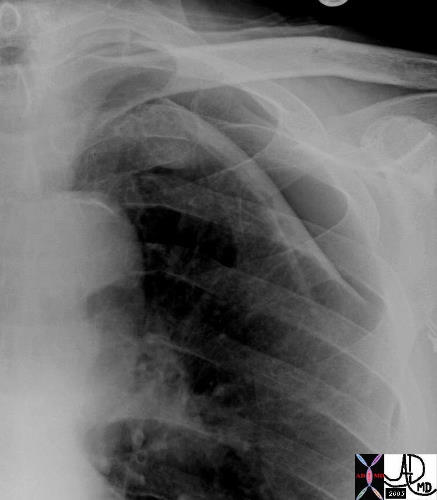
The above image is a magnified view of the pneumothorax.
Courtesy Ashley Davidoff MD TheCommonVein.net 42041b02
Treatment depends on the size of the pneumothorax. When large a pigtail catheter or formal chest is used and when small close observation is necessary. tension pneumothorax is an emergency and when suspected immediate decompression with a large bore needle should be attempted.
Accumulation of air in the pleural space leading to collapse of the underlying lung can occur spontaneously in tall and slim young adults or in patients with history of emphysema. Such patients usually present with an acute onset of unilateral pleuritic pain that may be associated with dyspnea. Depending on the size of the pneumothorax, it can be managed conservatively by observation or by evacuation of the air through placement of a chest tube.
Unusual Cases

Parekh, M et al Review of the Chest CT Differential Diagnosis of Ground-Glass Opacities in the COVID Era Radiology Vol. 297, No. 3 July 2020
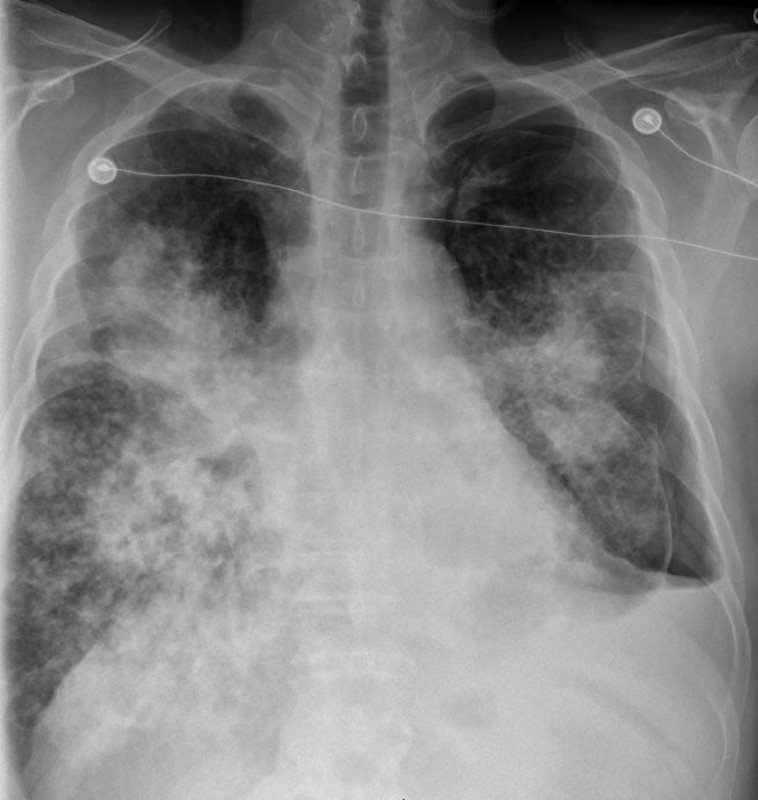
50-year-old male presents with history of Stage 4 sarcoidosis acute chest pain and dyspnea
The initial CXR shows a left sided pneumothorax, diffuse nodular pattern with confluent perihilar infiltrates and a left pleural effusion
Ashley Davidoff MD

This is the type of CXR that sends shivers down the spine. The overall blackness of the left chest cavity, in association with a nubbin of lung tissue in the ipsilateral hilum and rightward mediastinal shift is characteristic of a tension pneumothorax with total atelectasis of the left lung. Immediate and urgent decompression with a chest drain is indicated.
Courtesy of: Ashley Davidoff, M.D.
Loculated Pneumothorax
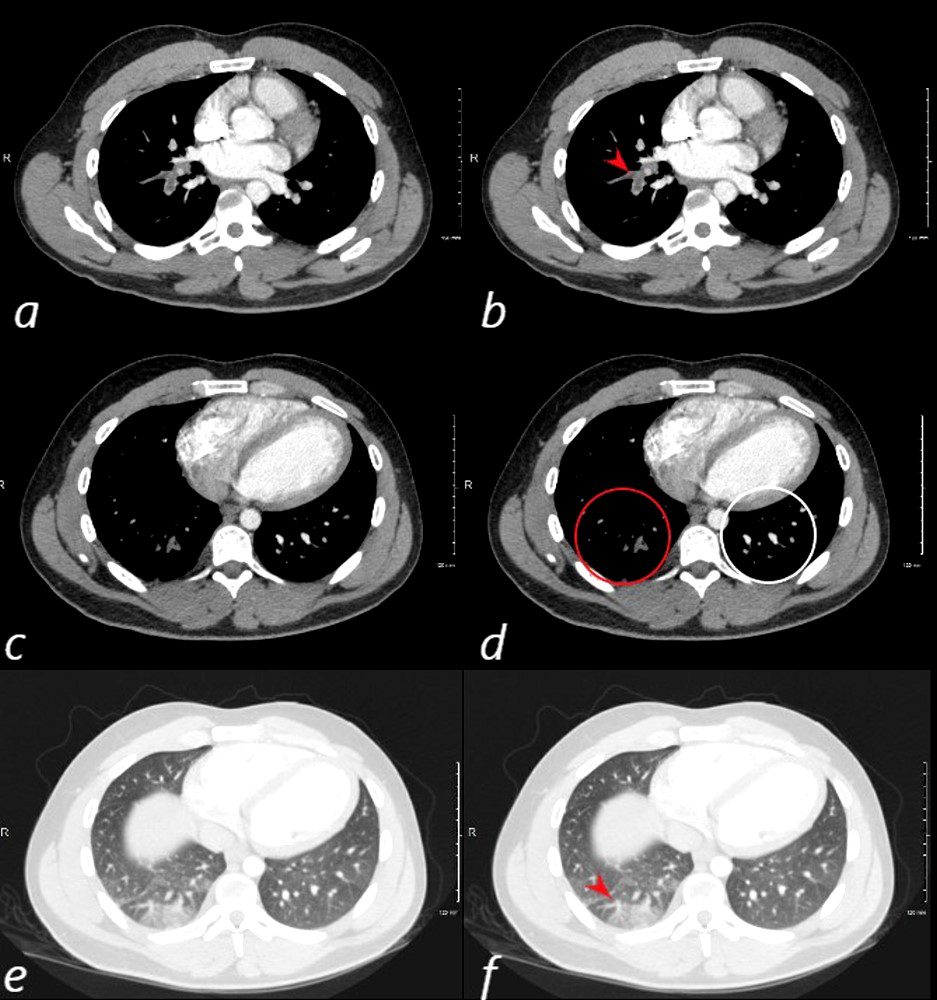

24 year old male with SLE presented with chest pain and dyspnea and initial CT showed occlusive pulmonary emboli to the right lower lobe (a,b, red arrowhead) with total occlusion of the right lobe artery extending into posterior basal segmental vessels (red ring d compared with normal vessels surrounded by white rin (d). An associated wedge shaped ground glass region is noted (e,f red arrowhead) representing either hemorrhage or early infarction
Ashley Davidoff MD


24 year old male with SLE presented with chest pain and dyspnea and initial CT showed occlusive pulmonary emboli to the right lower lobe initially associated with a wedge shaped ground glass region. 2 weeks later this evolved into a bronchopleural fistula, with a loculated pneumothorax in the right lower lobe (green star in a,b,c,d).with an air fluid level (yellow arrowhead in a,c,d) and a region of compressive atelectasis (white arrowhead a,c,d).
Ashley Davidoff MD
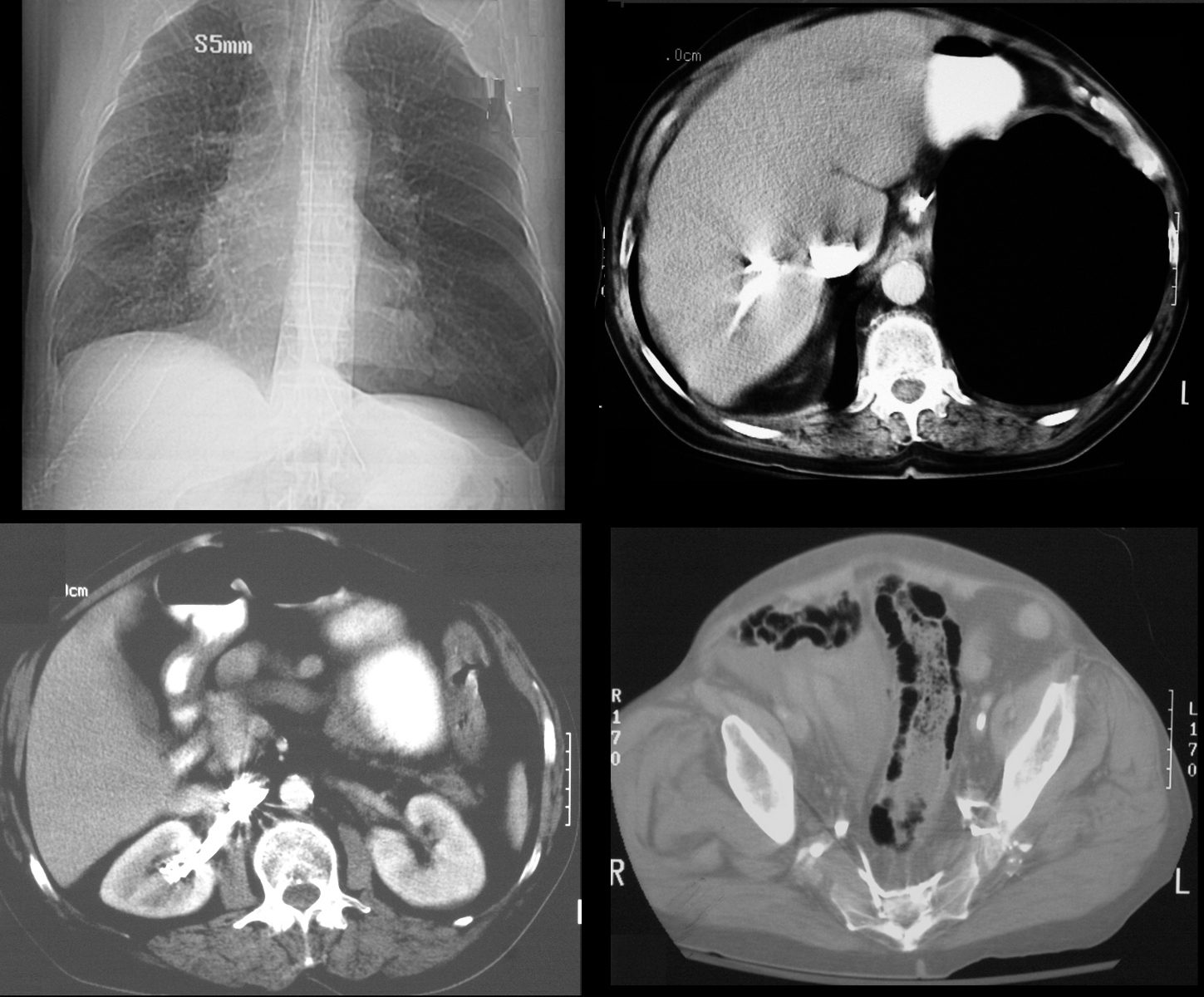

65 year old male s/p MVA presents in shock. Scout film (top left) shows left sided tension pneumothorax with rightward mediastinal shift. Axial CT through the liver (top right) shows expanded pneumothorax at the left lung base with reflux of contrast into the IVC.. Contrast also refluxes into the right renal vein (bottom left) and into the internal iliac veins (bottom right) Associated pneumatosis intestinalis in the sigmoid colon is present as well and likely secondary to the tension pneumothorax
Ashley Davidoff MD TheCommonVein.net
CXR Pseudo-pneumothorax
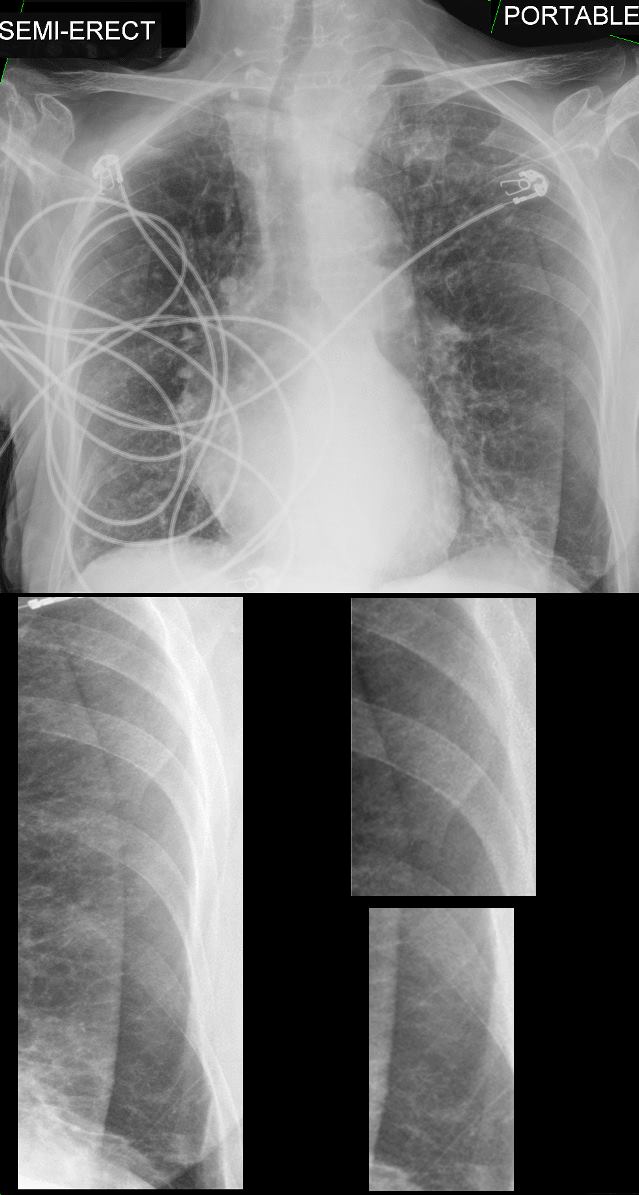

92-year-old female presents with dyspnea. Portable CXR in the frontal projection shows a well- defined line on the lateral aspect of the left lung masquerading as a pleural line and pneumothorax. Closer and magnified evaluation (lower panel images) shows lung markings projecting beyond the sharp line
These findings are consistent with a diagnosis of pseudo-pneumothorax caused by a skin fold
Ashley Davidoff MD TheCommonVein.net 135864c
Tension Pneumothorax



This is the type of CXR that sends shivers down the spine. The overall blackness of the left chest cavity, in association with a nubbin of lung tissue in the ipsilateral hilum and rightward mediastinal shift is characteristic of a tension pneumothorax with total atelectasis of the left lung. Immediate and urgent decompression with a chest drain is indicated.
Courtesy of: Ashley Davidoff, M.D.


CT scan in the axial and coronal planes show a right sided tension pneumothorax caused by the rupture of an apical bulla. There is total atelectasis of the right lung compression of the right sided heart structures and leftward shift of the mediastinal structures
Ashley Davidoff MD TheCommonVein.net b11585

